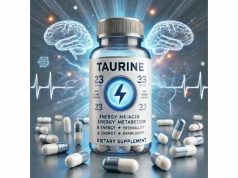
Oleamide is an intriguing compound gaining attention for its potential to support cognitive function, emotional balance, and overall well-being. Scientifically recognized as an amide derived from oleic acid, oleamide has been studied for its influence on sleep regulation, relaxation, and neurological communication. Some researchers suggest that it can help stabilize mood, soothe anxiety, and complement other therapies for mild mental health conditions. By modulating key neurotransmitters, oleamide may also assist in preventing certain psychiatric concerns. In this comprehensive guide, we will explore how oleamide Improves Mental Health, the mechanisms underlying its effects, and practical ways to incorporate it into a broader strategy for cognitive and emotional vitality.
Table of Contents
- What Is Oleamide?
- How Oleamide Improves Mental Health and Brain Conditions
- Key Benefits of Oleamide for Mental Health and Psychiatric Conditions
- How to Use Oleamide for Best Results
- Scientific Evidence and Research
- Frequently Asked Questions
- References and Sources
What Is Oleamide?
Oleamide is a fatty acid derivative first identified in 1989, known chemically as cis-9,10-octadecenoamide. Occurring naturally in the body—particularly in the cerebrospinal fluid—oleamide can also be found in certain animal tissues. Its functions encompass regulating sleep patterns, modulating synaptic processes, and helping sustain balanced physiological states.
Distinguishing Features
- Molecular Structure: Oleamide comprises an amide linkage of oleic acid, differentiating it from plain fatty acids. This structural uniqueness enables it to interact with critical receptors in the nervous system.
- Endogenous Production: Because it naturally appears in humans, oleamide is classified as an endocannabinoid-like substance. It influences key signaling pathways associated with relaxation, stress management, and circadian rhythms.
- Potential Role in Neuromodulation: Researchers believe oleamide plays a pivotal role in regulating GABA, serotonin, and other neurotransmitters integral to mood, sleep, and cognitive processes.
Nutritional and Supplemental Sources
- Dietary Origin: The direct dietary supply of oleamide is negligible in typical foods. However, nutrient-dense meals containing healthy fats can support broader fatty-acid balance, indirectly influencing the body’s amide production.
- Standalone Supplements: Oleamide is available in powder or capsule form, marketed for promoting restfulness, calm, and mental clarity.
- Synergistic Blends: Certain formulas combine oleamide with other calming compounds like L-theanine, magnesium, or melatonin to encourage deeper relaxation and stress relief.
Why Oleamide Gains Spotlight
While research on oleamide’s mental health potential is still emerging, it has drawn attention for its presumed links to improved sleep quality, mood balance, and neuroprotection. Addressing sleep disruptions often correlates with improved emotional stability, highlighting why oleamide is appealing to those seeking an integrative approach to mental wellness. Additionally, the interplay between oleamide and the endocannabinoid system suggests that further investigations may reveal novel therapeutic angles.
Despite being less famous than other supplements, oleamide stands at the nexus of sleep science, endocannabinoid research, and psychiatric inquiry. Its distinct mechanism of interacting with neurotransmitters fosters curiosity among health practitioners, especially those exploring natural methods to optimize brain function and emotional harmony.
How Oleamide Improves Mental Health and Brain Conditions
Oleamide’s physiological actions hinge on its capacity to interface with specific receptors, influencing the release, uptake, or modulation of neurotransmitters central to mood and cognition. The compound’s multi-faceted approach can be broken down into several key pathways, each contributing to mental health maintenance and potential disorder prevention.
1. Enhancing Sleep Architecture
- Promotion of Deeper Sleep: Quality slumber underpins psychological resilience. Oleamide appears to boost sleep onset and depth, partly by interacting with the GABAergic system—one of the primary inhibitory networks in the brain.
- Regulation of Circadian Rhythms: Oleamide might stabilize daily sleep-wake cycles, a vital component for mental clarity and emotional steadiness.
2. GABA Modulation
- Natural Sedative-Like Effect: By helping to sustain higher GABA activity, oleamide may foster a calming influence on neural excitability, thereby reducing tension and anxious states.
- Stress Resilience: Chronic stress can tip the GABA-glutamate balance, leading to restlessness or irritability. Oleamide’s GABA-related benefits may help reestablish equilibrium.
3. Influence on Serotonin and Dopamine
- Mood Regulation: Serotonin deficiency is often tied to depression, while dopamine plays a role in motivation and reward. Preliminary data suggests oleamide can subtly affect both, contributing to a brighter mood and consistent energy.
- Reinforcing Positive Outlook: When neurotransmitter levels are balanced, individuals may be less prone to mood swings and mental fatigue.
4. Neuroprotective Properties
- Counteracting Oxidative Stress: Chronic oxidative damage can accelerate cognitive decline. Oleamide’s antioxidant attributes might buffer neurons against such harm, a potential boon for long-term brain health.
- Synaptic Plasticity: Ongoing research hints that oleamide could preserve or support synaptic adaptability, crucial for learning, memory, and resilience to neurological stress.
5. Involvement with the Endocannabinoid System
- CB1 Receptor Interactions: While not a classic endocannabinoid, oleamide’s chemical similarities enable it to interact with cannabinoid pathways. This synergy may further calm anxiety, reduce inflammatory signaling, and stabilize mood.
- Adjunctive Potential: Some believe oleamide might complement hemp or cannabis derivatives—like CBD—by reinforcing anandamide or other endogenous cannabinoids, although this angle requires deeper scientific validation.
6. Possible Anti-Inflammatory Benefits
- Reducing Neuroinflammation: Elevated inflammatory markers in the brain correlate with depression, Alzheimer’s, and other psychiatric ailments. Oleamide’s capacity to mitigate certain inflammatory signals may thereby protect cognitive and emotional health.
- Whole-Body Harmony: By promoting healthy inflammatory responses, oleamide could indirectly benefit other systems, making holistic stress management more achievable.
7. Emotional Regulation During Sleep Deprivation
- Maintaining Emotional Balance: Insufficient rest exacerbates negative feelings, erodes mental performance, and intensifies stress hormones. Oleamide’s potential to boost sleep quality fosters emotional stability, a primary shield against mood disorders.
- Prevention of Long-Term Strain: Chronic sleep deficits accumulate, often leading to heightened anxiety or burnout. By preserving adequate rest, oleamide might impede the gradual drift toward mental exhaustion.
By fortifying neurotransmitter balance, supporting natural sedation, and shielding neural networks, oleamide stands out as a multifaceted player in mental health. Whether targeting mild anxiety relief, better sleep continuity, or broader neuroprotection, its broad impact warrants attention as part of a well-rounded approach to psychological and cognitive well-being.
Key Benefits of Oleamide for Mental Health and Psychiatric Conditions
Oleamide’s unfolding story in scientific literature reveals several dimensions in which it may aid psychological balance and reduce the burden of specific mental challenges. Here are the main ways it can support individuals grappling with stress, mood disorders, or other psychiatric concerns.
1. Promoting Relaxation and Calming Anxiety
- Natural Anxiety Soother: Elevated GABA activity linked to oleamide can reduce hyperarousal states. This is particularly relevant for those with generalized anxiety or stress-induced restlessness.
- Less Jittery Approach than Sedatives: While pharmaceutical anxiolytics may come with sedation or dependency risks, oleamide’s gentler mechanism could afford relief without pronounced grogginess.
2. Potential Aid in Depression
- Serotonin Support: Some individuals experience mild lifts in mood, possibly due to better neurotransmitter regulation and improved restorative sleep.
- Sleep-Related Mood Improvement: Chronic insomnia often coexists with depression. By enhancing slumber, oleamide indirectly contributes to a more stable emotional baseline.
3. Mitigating Effects of Chronic Stress
- Buffering Cortisol Surges: If quality rest is more consistent, the body manages cortisol cycles more effectively. Lower chronic cortisol has been associated with fewer stress-induced mood dips and better coping.
- Resilience and Coping Skills: More refreshing rest fosters mental agility, making it easier to handle daily pressures without becoming overwhelmed.
4. Improving Sleep Disturbances Tied to Psychiatric Conditions
- Insomnia Linked to Anxiety or PTSD: Many anxiety disorders, post-traumatic stress disorder (PTSD), or OCD come with significant insomnia. Oleamide’s role in promoting deeper relaxation can complement therapeutic interventions.
- Enhancing Sleep Architecture: In consistent use, oleamide might help sustain uninterrupted sleep cycles—key for mental health and cognitive restoration.
5. Boosting Overall Cognitive Function
- Memory and Learning Facilitation: Studies point to enhanced synaptic function in well-rested brains. By addressing sleep quality, oleamide sets the stage for better recall and concentration.
- Cognitive Preservation: Over time, reduced oxidative stress and stable neurotransmitter levels may shield the brain from age-related decline or memory impairments.
6. Complementing Prescription Therapies
- Synergistic Effect with SSRIs: For some, SSRIs or SNRIs are indispensable. The addition of oleamide might amplify relaxation and consistent sleep, helping such medications function more smoothly. Always consult a professional before combining.
- Improving Medication Adherence: Those who notice a calmer mind after using oleamide may be more likely to maintain therapy regimens, given reduced nighttime discomfort or daytime agitation.
7. Balanced Emotional Regulation
- Managing Irritability and Mood Swings: By stabilizing key neural chemicals and diminishing stress markers, oleamide can lessen dramatic mood fluctuations, offering steadier emotional ground.
- Foundational Good Sleep: Emotional outbursts often coincide with suboptimal sleep. If oleamide paves the way for restful nights, it stands to reason that daily irritability or impulsivity might diminish.
When integrated sensibly into a broader mental health strategy, oleamide could serve as a valuable tool—albeit not a stand-alone solution—for myriad psychological hurdles. Its gentle approach in modulating stress, sleep, and neurotransmitters underscores its promise as a supportive adjunct to mainstream therapies or holistic wellness routines.
How to Use Oleamide for Best Results
Optimizing oleamide’s potential depends on selecting an appropriate form, mastering dosage, and coordinating with other daily habits that nurture mental balance. Below are practical guidelines to help ensure safe, effective usage and sustain the beneficial effects oleamide can deliver.
1. Choosing the Right Form
- Standalone Oleamide Supplements: These typically come as powders or capsules. Look for products specifying purity, third-party testing, and minimal fillers.
- Combination Products: Certain supplements combine oleamide with other calming agents—like 5-HTP, L-theanine, or adaptogens—to enhance synergy, especially for sleep or stress relief.
- Quality Indicators: Reputable manufacturers detail exact oleamide concentrations on their labels. Confirm authenticity via certificates of analysis (CoAs) or brand reputation.
2. Timing Your Intake
- Evening Use for Sleep: Many individuals prefer taking oleamide 30–60 minutes before bedtime to facilitate relaxation and expedite sleep onset.
- Afternoon / Early Evening: Those aiming to buffer daily stress might experiment with an earlier dose to encourage calmness through the evening, though personal responses differ.
- Avoiding Grogginess: If you find it too sedating in the daytime, shift usage closer to night or lower your dosage.
3. Determining the Optimal Dosage
- Start Low: Begin with a conservative dose—50–100 mg, for instance—to gauge tolerance. Some users may need only a small amount for noticeable relaxation.
- Adjust Gradually: If needed, increment dosage by 50 mg after a week or two until desired effects (i.e., calmer mood or easier sleep) are achieved. Do not exceed brand recommendations without professional advice.
- Professional Guidance: Individuals with chronic insomnia or psychiatric conditions should involve a healthcare provider in dosage discussions for tailored recommendations.
4. Combining with Complementary Lifestyle Habits
- Consistent Sleep Hygiene: Oleamide’s efficacy heightens when supplemented by good routines: a cool, dark bedroom, minimized screen time before bed, and regular sleep-wake schedules.
- Diet and Hydration: Balanced diets supply vital vitamins and minerals that support neurotransmitter production. Avoid high stimulants (e.g., caffeine) near bedtime to let oleamide fully manifest its calming role.
- Mindful Practices: Activities like meditation, gentle yoga, or journaling can amplify oleamide’s relaxation effects, fostering a well-rounded approach to mental health.
5. Potential Interactions and Precautions
- Medication Overlaps: Oleamide’s sedative-like influence could intensify certain prescriptions (like benzodiazepines) or even natural herbs with relaxing properties (valerian, chamomile). Consult a professional before mixing.
- Allergic Reactions: Though rare, watch for signs of intolerance such as headaches or digestive distress. Discontinue if adverse symptoms persist.
- Pregnancy and Nursing: Safety data for expectant or breastfeeding mothers is sparse. Seek medical counsel if considering oleamide in these life stages.
6. Cycling and Long-Term Use
- Daily or Intermittent: While some prefer nightly use for consistent sleep benefits, others cycle usage or save it for high-stress times.
- Assessing Efficacy Over Time: Periodically evaluate whether your sleep quality or stress levels remain improved. If results plateau or diminish, discuss dosage adjustments or alternative strategies with a healthcare provider.
7. Monitoring Results
- Track Sleep and Mood Changes: Maintain a journal noting bedtime routines, dosage, and how you feel upon awakening. Over a few weeks, patterns often emerge, clarifying how oleamide shapes your mental well-being.
- Revisit Goals: Determine whether your primary aim is stress management, deeper sleep, or reduced anxiety. Fine-tune timing, dosage, or combine with other supportive measures accordingly.
By initiating with minimal doses, aligning usage with established health habits, and regularly reviewing personal progress, oleamide can integrate seamlessly into a mental wellness framework. Thoughtful use ensures the synergy between oleamide’s natural calming abilities and other interventions aimed at achieving stable emotional balance.
Scientific Evidence and Research
While oleamide is not as extensively studied as some other supplements, existing findings highlight its promise in enhancing mental, cognitive, and sleep-related parameters. Below is a closer look at core areas where research has illuminated oleamide’s potential.
1. Sleep and Relaxation Studies
- Early Identification: In its initial discovery, oleamide was found in increased concentrations in the cerebrospinal fluid of sleep-deprived animals, suggesting a direct link to sleep induction.
- Rodent Experiments: Multiple animal trials confirm that administering oleamide prolongs sleep phases, implying it may act as an endogenous modulator of rest.
2. Interaction with Neurotransmitters
- Serotonergic Activity: Some in vitro experiments reveal that oleamide can influence serotonin receptors, possibly amplifying sedation and mood regulation.
- GABA Potentiation: Additional studies propose that oleamide enhances GABA’s inhibitory effects, further explaining its potential anxiolytic or relaxant properties.
3. Endocannabinoid System Insights
- Functional Overlaps: Oleamide shares structural similarities with anandamide, an endocannabinoid regulating mood, pain, and appetite. This parallel raises questions about oleamide’s partial engagement with cannabinoid receptors.
- Potential Synergy with CBD: Research is nascent, but preliminary data suggests combining oleamide with compounds like cannabidiol (CBD) might deliver complementary calming or anti-inflammatory effects.
4. Stress and Anxiety Dimensions
- Preliminary Clinical Observations: Although large-scale human trials remain limited, smaller pilot studies or anecdotal accounts report decreased perceived stress, eased tension, or improved coping when taking oleamide.
- Comparison with Traditional Sedatives: Some scientists question whether oleamide could serve as a mild, non-habit-forming alternative to heavier pharmaceuticals in certain mild anxiety cases.
5. Impact on Cognitive Function
- Memory Enhancement Theories: Because restful sleep is integral to memory consolidation, oleamide’s ability to better sleeping patterns may indirectly bolster recall and learning capacity.
- Future Directions: More research is warranted to see if oleamide can mitigate mild cognitive issues in aging populations or those under chronic stress.
6. Neuroprotective Potentials
- Oxidative Damage Reduction: Laboratory findings indicate that oleamide might shield neuronal cells from oxidative stress, a factor in neurodegenerative disorders.
- Anti-Inflammatory Mechanisms: Ongoing research explores how effectively oleamide modulates neuroinflammation, with hopes it might serve as a protective agent against conditions like Alzheimer’s or Parkinson’s disease.
7. Limitations and Knowledge Gaps
- Lack of Large-Scale Trials: Much of the data stems from small experiments or animal models. More robust, randomized human clinical trials are necessary to fully ascertain oleamide’s therapeutic range.
- Exact Dosing Guidelines: Optimal amounts remain undetermined, and responses can be individual-specific. Standardized dosing protocols do not yet exist, underscoring the importance of cautious experimentation.
- Potential Side Effects: While oleamide appears generally well-tolerated, deeper studies on long-term safety, especially in special populations, would improve confidence in its usage.
Collectively, the existing body of scientific work underscores a consistent theme: oleamide influences critical neural pathways that govern mood, sleep, and cognitive function. Despite the need for additional, larger clinical trials, the current research base supports the idea that oleamide can be an effective, gentle tool for individuals seeking to advance their mental health strategies.
Frequently Asked Questions
Can oleamide replace prescription sleep aids?
Oleamide’s mild effect can be beneficial for some people who struggle with minor sleep issues, but it shouldn’t be used as a direct substitute for doctor-prescribed medications. Always consult a medical professional before altering a treatment regimen.
Is oleamide safe for long-term use?
Short-term data suggests oleamide is generally tolerated well. However, human studies on long-term safety remain limited. If you plan to use oleamide regularly, it’s best to seek guidance from a qualified healthcare provider.
Does oleamide help prevent mental disorders?
While oleamide may enhance sleep and support neurotransmitter balance, it cannot singlehandedly prevent psychiatric disorders. Lifestyle, environment, and genetics are also crucial. Incorporating oleamide with healthy habits may reduce certain risk factors.
Which form of oleamide is most effective?
Oleamide commonly appears in capsule or powder form. Prioritize products from reputable brands, and ensure the formula indicates purity and precise dosage. Some users combine oleamide with other relaxants or adaptogens under professional advice.
How fast does oleamide work for better sleep?
Response varies. Some individuals notice benefits—such as relaxed muscles or an easier time dozing off—within 30 to 60 minutes after ingestion. For more sustained improvements in sleep quality, consistent use over a few weeks may be needed.
Are there dietary sources of oleamide?
Natural dietary sources are minimal. Though the body can synthesize it from oleic acid, obtaining enough through standard foods alone is challenging. Supplements thus represent a more direct way to raise oleamide levels.
Can oleamide be used alongside antidepressants?
Potentially, yes, but always consult your prescribing physician first. Oleamide’s influence on neurotransmitters could reinforce or interact with certain medications. Professional oversight ensures safety and efficacy.
References and Sources
- Cravatt, B. F., Prospero-García, O., Siuzdak, G., Gilula, N. B., Henriksen, S. J., Boger, D. L., & Lerner, R. A. (1995). Chemical characterization of a family of brain lipids that induce sleep. Science, 268(5216), 1506–1509.
- Boger, D. L., Henriksen, S. J., & Cravatt, B. F. (1998). Oleamide: An endogenous sleep-inducing lipid and prototypical member of a new class of biological signaling molecules. Current Pharmaceutical Design, 4(4), 303–314.
- Fisar, Z. (2012). Endocannabinoids and mood disorders. Folia Biologica, 58(2), 59–75.
- Murillo-Rodríguez, E., Calderón-Garcidueñas, A. L., Haro, R., & Pineda, J. C. (2007). Oleamide modulates memory in the rat. Neuroscience Letters, 426(1), 39–42.
- Leggett, J. D., Aspley, S., Beckett, S. R. G., D’Antona, A. M., Kendall, D. A., & Kendall, D. A. (2006). Oleamide is a selective endogenous agonist of rat and human CB1 cannabinoid receptors. British Journal of Pharmacology, 148(8), 1066–1071.
- LoVerme, J., La Rana, G., Russo, R., Calignano, A., & Piomelli, D. (2005). The search for the palmitoylethanolamide receptor. Life Sciences, 77(14), 1685–1698.
- Murillo-Rodríguez, E. (2008). The role of the CB1 receptor in the regulation of sleep. Progress in Neuro-Psychopharmacology & Biological Psychiatry, 32(6), 1420–1427.
Disclaimer:
This article is meant for educational purposes and does not replace professional medical counsel. Always seek advice from a qualified healthcare provider when considering new supplements or changes to your mental health treatment.
We hope you found this guide useful. Feel free to share it on Facebook, X (formerly Twitter), or another platform you enjoy. Follow us for additional insights into natural methods for supporting mental and brain wellness!










